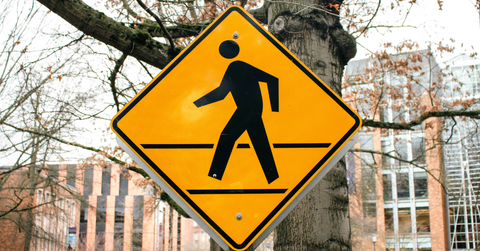
How Sidewalk Flags Affect Drainage? Know More About Accessibility and Pedestrian Safety
New York City and its residents attach ample importance to its sidewalks. It’s because they are essential public spaces that link millions of commuters, residents, and visitors across the globe daily. Typically, the sidewalks are developed using concrete sections, that are called sidewalk flags, that together create the pedestrian network in the city. Even though they might remain simple, the placement and condition of these flags can lead to accessibility, drainage, and pedestrian safety all through city’s boroughs.
Defining a sidewalk
A sidewalk flag is a rectangular slab of concrete that typically measures five feet by five feet. Sidewalk flags come together to make a sidewalk. Over time these slabs may shift, crack, or settle due to tree roots, soil movement, or heavy keys. In an urban setting, like NYC, even the small change of one sidewalk flag can affect how water drains and how safely pedestrians can walk.
The impact of sidewalk flags on the drainage
Proper drainage is important to the integrity of a sidewalk. When a sidewalk flag is uneven, tilted, or cracked, rain water and melting snow can collect in low spots causing puddles or seepage of water. Standing water deteriorates the concrete, but also leads to the formation of ice and more slip hazards in the winter.
In older neighborhoods where streets and sidewalks may be in poor repair, the misalignment of sidewalk flags leads to poor drainage which may cause water, (puddles), to flow over into adjacent properties that may impact buildings or basements. The NYC Department of Transportation (DOT) requires sidewalks to be graded (in an ideal situation) to direct water toward the curb and not toward private property.
Safety concerns of affected sidewalk flags
Cracked or raised sidewalk flags rank among the most prevalent causing trip-and-fall accidents in New York City. The NYC DOT stipulates a sidewalk flag is defective when it has:
- The vertical difference over ½ inch between sections
- A cracked flag that is over an inch in width
- Spalling concrete
- A sloped surface leads to instability
Such conditions can lead to a DOT sidewalk violation requiring property owners to make repairs within a reasonable time frame. Aside from creating a hazard for public safety, if someone is injured, liability may arise if the property owner fails to take responsibility for this.
Accessibility and sidewalk flag in NYC
The Americans with Disabilities Act (ADA) and NYC DOT regulations emphasize accessibility. Uneven or broken sidewalk flags create challenges for using wheelchairs, walkers, strollers or canes. Even a half-inch height differential between two sidewalk flags may create a tripping hazard or inaccessible barrier. This is where you need to consult sidewalk repair contractors NYC and resolve the issue.
Finally, property owners in NYC, as a part of their sidewalk maintenance obligations, are responsible to ensure that sidewalks have no level transitions between sidewalk flags, curb ramps align correctly and are cleared timely and that damages are repaired. A sidewalk system in good repair will ensure all pedestrians (regardless of mobility) may safely and comfortably traverse city streets.
Final words
Sidewalk flags in New York City have an essential role to play in the way the city addresses and resolve drainage, accessibility aspects, and security. Upkeeping these concrete segments is not merely about aesthetics, instead, this is about public accountability. When you keep the sidewalk flags even, correctly graded, and in the best condition, the property owners can secure the pedestrians. They can also cater to the compliance codes and avert water damage.
